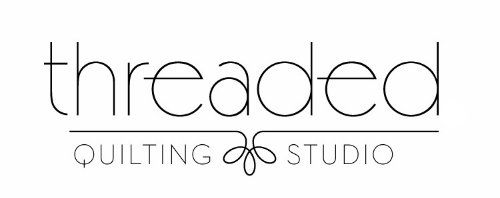Cutting unit templates: To efficiently cut the templates apart, I stack all of the same pages together (add staples if you prefer, I don't find it necessary) and cut through the 4 pages at once. I like to use a dull rotary cutter that I've set aside for paper use to do the cutting. Make sure to cut outside of the dashed line. The space between the solid line and the dashed line is the seam allowance. Once all units are cut out, separate half (two complete sets: Units A-U) to be used this week.
Cutting fabrics: I've written the cutting instructions by block so as to not overwhelm you with ALLLLLLL of the fabric cutting at once. I want to get to the fun sewing part, too!
On page 3 of the Feathered Star QAL pattern, the instructions include quantities for FOUR stars, so cut them all, and then set half of each quantity aside for next week. Yes, that's a spoiler, we'll be working on the last two 16" stars for Week Two. :)
Note: I'm working with two shades of gray. Shadow is the lighter shade of gray and used in the background (including the first triangle pieces adjacent to the "star tips", positioned toward the perimeter of the block i.e., pieces A1, B1, C1, D1, E1, F1, G1, H1). This is a slightly different coloring scheme than what is written in the NYSFS pattern where all the background spines are the same color. In this QAL, I have white as being my main background spine color that contours the star points. Iron is the darker gray color and is used for the spines and centers of this 16" block.
There are a few square sizes that are very similar, it might help to label them. For example, the 5" Shadow squares will be used with Units R-U and the 5.5" Shadow squares will be used with Units A-D. Do what you need to do to keep your pieces organized.
Sewing: If you've never foundation paper pieced before, I highly encourage you to watch my video tutorial series that will show you step-by-step how to complete this pattern. If this ain't your first paper piecing rodeo... well, giddyup! ;) You should be just fine following the instructions in the pattern.
USE A SHORTENED STITCH LENGTH! Sorry to shout, but this is important. I'm using a 1.2 stitch length which is tiny, tiny, tiny. Anything 1.5 or smaller is okay. I'm also using the aforementioned regular copy paper which is kind of thick. I also use a strong poly thread, so I don't have thread breakage issues, and I use a 90/14 Microtex needle from Schmetz. Feel free to adjust any of these factors until you're happy with sewing and how the papers tear away.
Does your sewing machine have a thread cutting feature or button? If it functions properly: USE IT!!! I paper pieced for years before I started actually using mine and it was a game changer! The nature of paper piecing is sewing a bunch of small lines, starting and stopping frequently. You could chain some pieces together, but it's a little awkward. When you use the thread cutter, you don't have to hold your threads as you begin the next seam. That is a wonderful thing! You'll end up using less thread, too.
I could stop now and say "Go for it!", but... I want to do everything to make this super-enjoyable for you so I took photos (captioned for your pleasure) as I was sewing my test block together to illustrate a few other tips and/or reminders.
While it doesn't really matter which order you sew all of the units (21 total), if you're just getting back into the groove of paper piecing, you may want to start with Unit I (as in igloo) shown in the next photo.



















